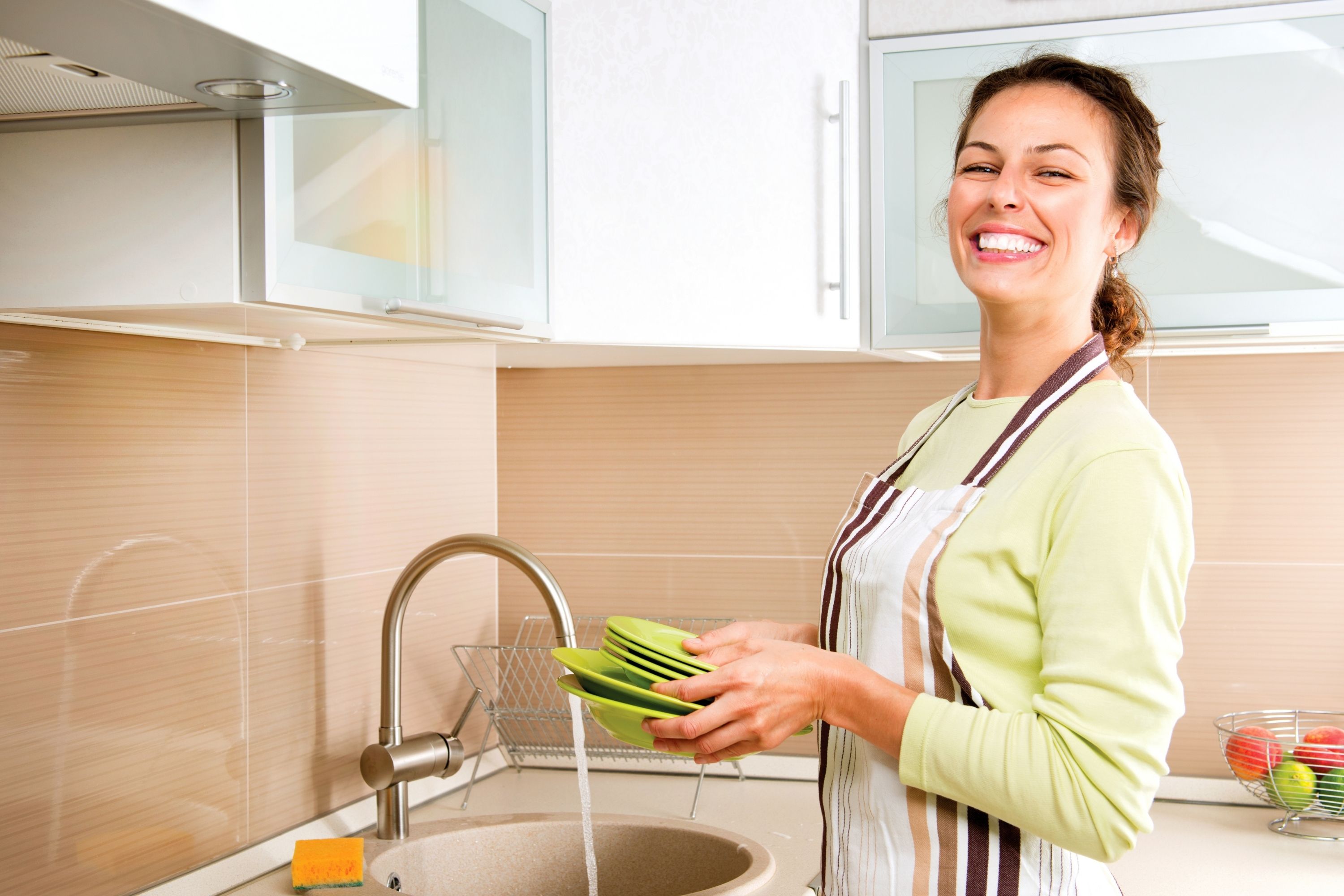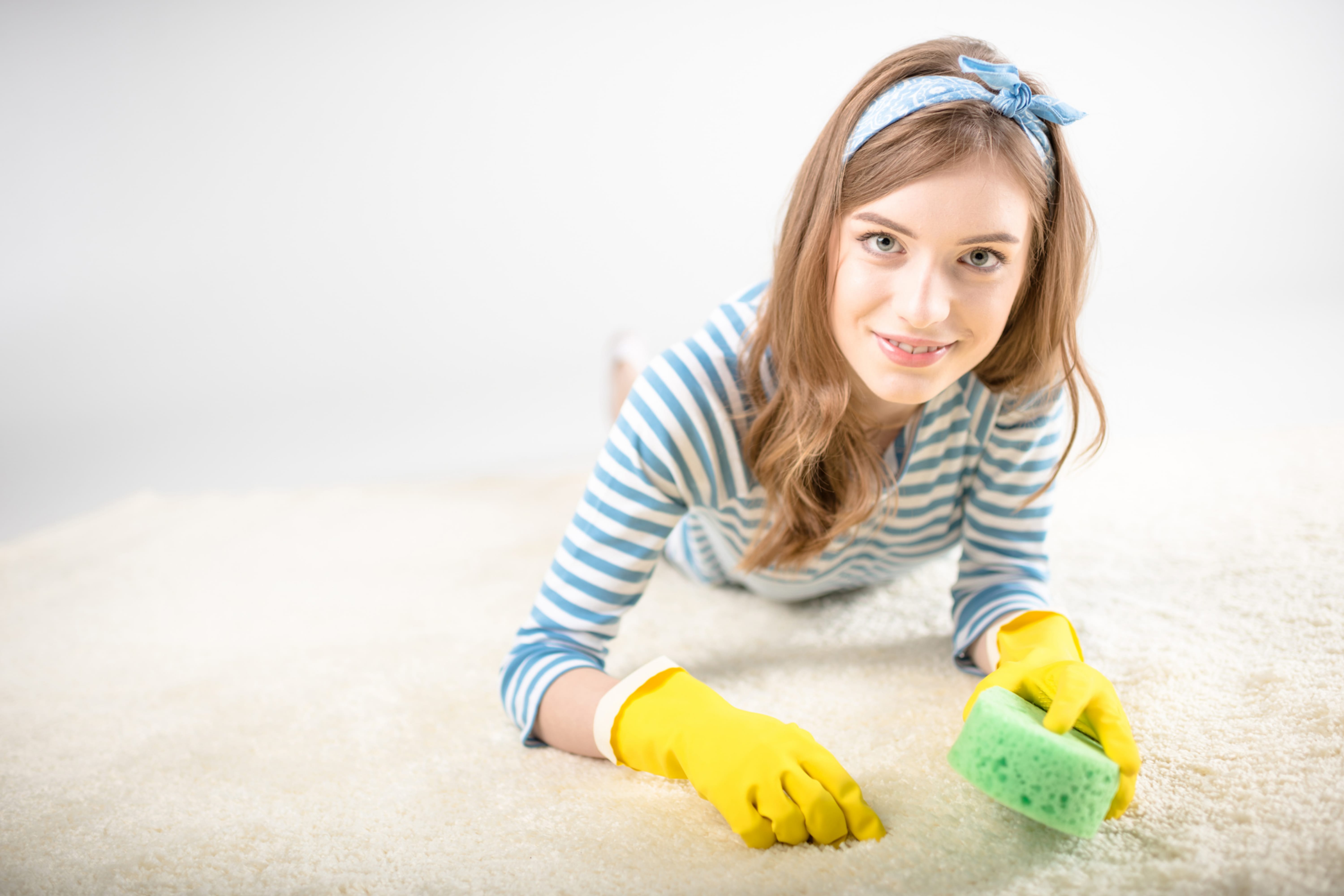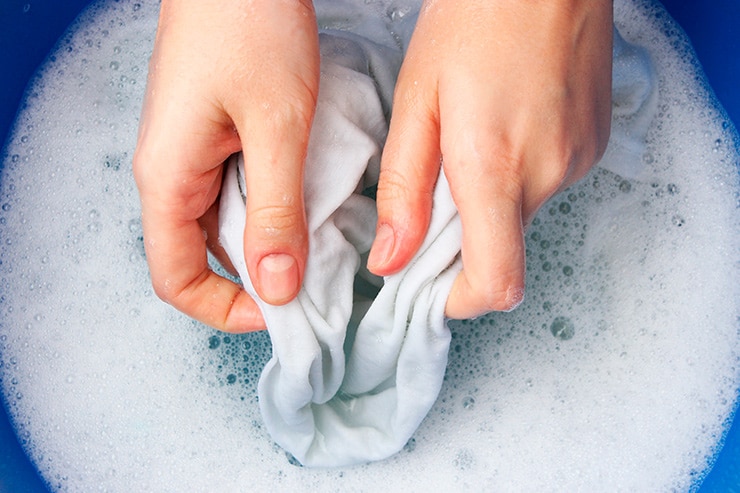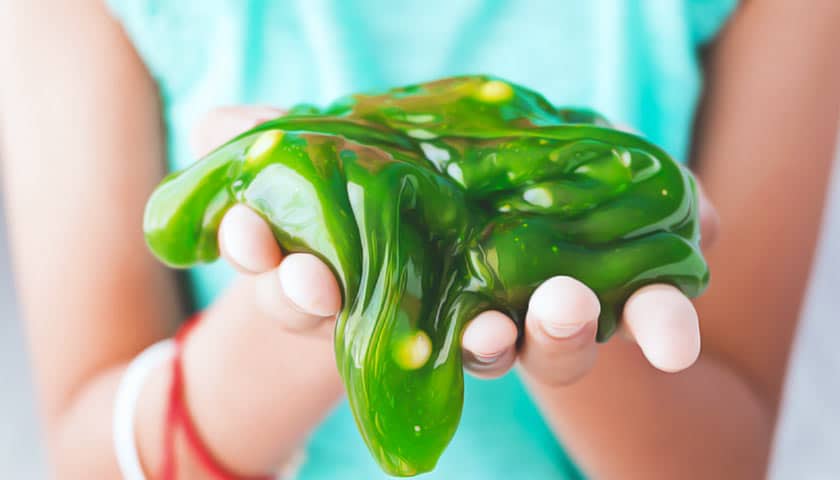Keeping your home or office kitchen clean is important if you want to avoid the spreading of dirt and debris all over the building. However, sanitizing your kitchen utensils that include tablewarer, dishes, and working surfaces (for instance, countertops, table tops, cutting boards, etc.) is the same essential!
This is why today we decided to provide everyone with a brief yet detailed guide on how to clean and sanitize your home or corporate kitchen utensils to keep them safe for you and others to use.
Which Is the Correct Order Of The Steps For Cleaning And Sanitizing In the Kitchen?
You may think that cleaning and sanitizing your kitchen only implies wiping the dirty surfaces and washing dishes after you use them for cooking and eating. However, to keep your kitchen really clean and health-friendly, we recommend you follow a certain sequence of actions that will guarantee you the safety of everything in it.
As you probably know, food safety implies not only washing fruits and veggies before consuming them, it also includes cleaning of the kitchen utensils and dishes, as well as working surfaces to avoid the spreading of microbes and harmful bacteria. If your kitchen dishes, utensils, and equipment haven’t been properly cleaned and sanitized, they can become a real health hazard for you and your family members.
What is the distinction between cleaning and sanitizing, you may ask? Well, it is pretty simple. See, cleaning means that you get rid of visible dirt, grime, grease and other impurities and pathogens that can be found on your kitchen working surfaces (for instance, table tops, countertops, cutting boards, etc.) or on the dishes. For this purpose, water and dish soap are usually used.
As for sanitizing, it is a somewhat distinct procedure. Sanitizing means that we destroy bacteria and microbes that can be left after the cleaning. To sanitize anything, we usually have to use specific antimicrobial cleaning products.
So what is the first step of cleaning and sanitizing stationary equipment? And what is the last step in cleaning and sanitizing a food contact surface or other items in the kitchen? To answer these questions, check out our guide on steps for cleaning and sanitizing we have prepared for you. By the way, you can use it not only for your kitchen, but also for other rooms and areas in your house!
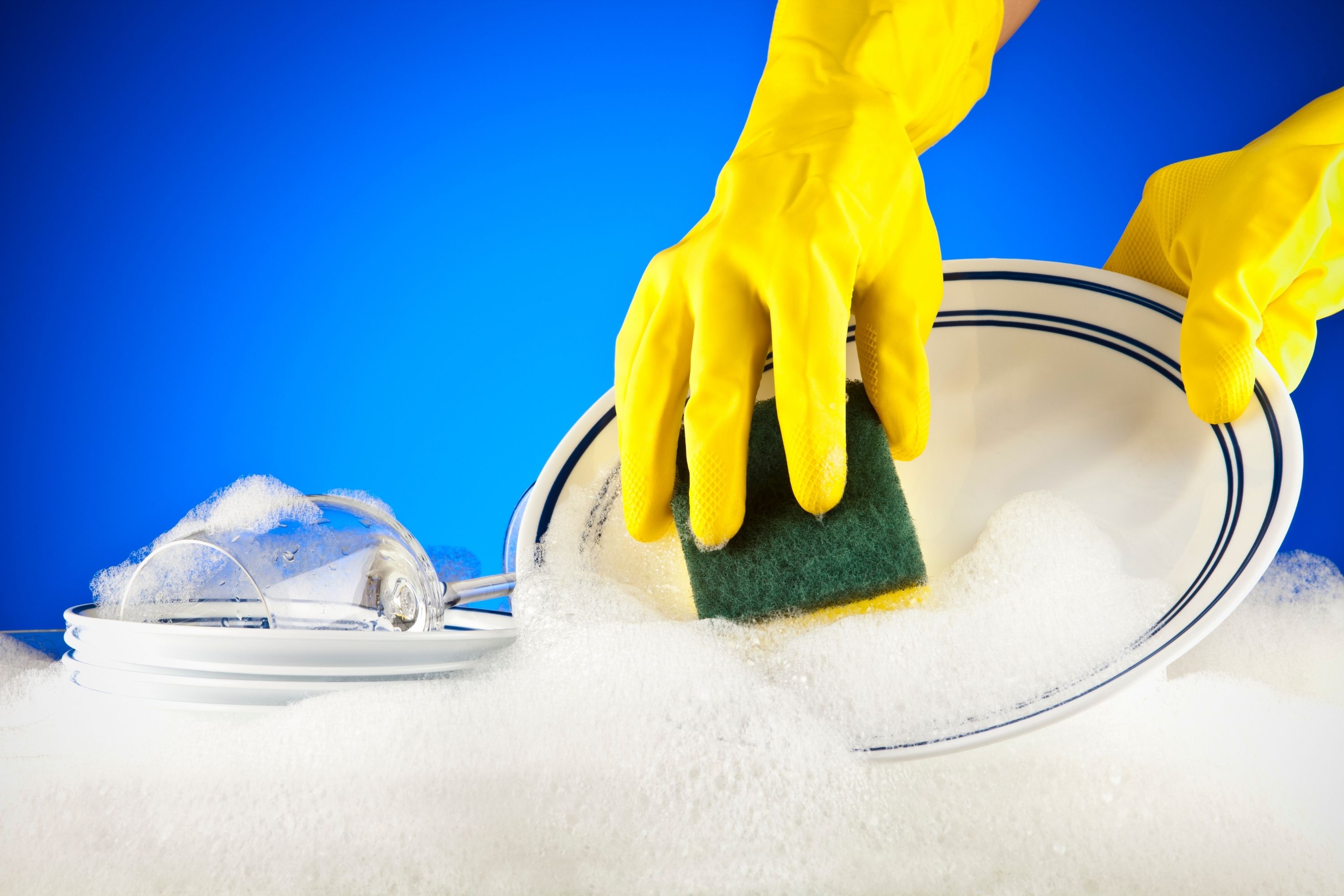
Correct Cleaning In the Kitchen. How to Wash Dishes Properly?
When washing dishes, most of us usually make use of some dishwashing liquid dissolved in warm water, and a sponge to scrub the oil and grease off our plates and frying pans. As an alternative option, we may simply toss the dirty load of dishes into the dishwashing machine and press the start button! But is it the correct order of washing dishes? We took a lot of tips from the professional cleaners and collect them for you.
If you are using a dishwasher, then you don’t have to worry about the washing order. But if you do this manually, following the exact order is important. In addition, considering a few handy tips will only help you wash your dishes faster and better.
- Wash your dishes in a dish tub instead of doing it one at a time under the tap.
- Wash your dishes in this order: first come crystal, then glassware, clear glass plates, other plates, flatware, serving ware, the greasiest serving dishes, and only then pots and pans.
- After you are done with washing, rinse five or six pieces of your dishware at a time using hot tap running water.
- Start rinsing from the back of the plate or outside of the glass, rinsing the drinking or eating surfaces last.
- Use cold water only for washing off starches and dairy products.
- Milk bottles will be cleaned easier if you soak the denture cleaner in them overnight and then scrub them with a narrow nylon toothbrush.
- Always wash pots and pans right after you use them!
With all this in mind, keeping your dishes and tableware clean will not be a big deal for you anymore.
The Correct Order Of Steps For Cleaning And Sanitizing Utensils By Hand
Since you already know in what order to wash your dishes, now it is time to figure out what the order must be to sanitize them, as well as other kitchen utensils and working surfaces.
So to sanitize the majority of cooking utensils, you can use bleach or peroxide. You will also need gloves, some dish soap, and a scrubber or brush. Start with scrapping all the dry particles of food from the utensils that you can see. Then, fill the sink with hot water and add a few squirts of your dish soap.
Let the utensils soak for five minutes more or less, and then scrub off all the debris using a scrubber or a scrub brush. After this is done, drain the sink and refill it with clean water again.
Add two big spoons of bleach or peroxide into this new water and allow the utensils to sit in this “bath” for ten minutes or so. This amount of time is usually enough for sanitizing the utensils that are used in a regular kitchen. However, if you are sanitizing utensils that are used in the commercial kitchen (e.g. in a restaurant or cafe), you’d better leave them in that bleaching water for a bit longer.
After soaking is done, take the utensils out, rinse thoroughly and drain in hot water, and let them air dry.
In case you need to sanitize the kitchen utensils that are made of metal, you will not have to use bleach or peroxide. Simply fill a pot with a gallon of water and bring it to boil. Meanwhile, clean off all the dry particles from your metalware.
Wash your cooking utensils with hot water and dish soap in a sink, then drain it, and pour that water you were boiling over the utensils (the water must be 171 degree Fahrenheit!).
After they sit for a minute in that boiling water, carefully drain the sink and let your cooking utensils to air dry.
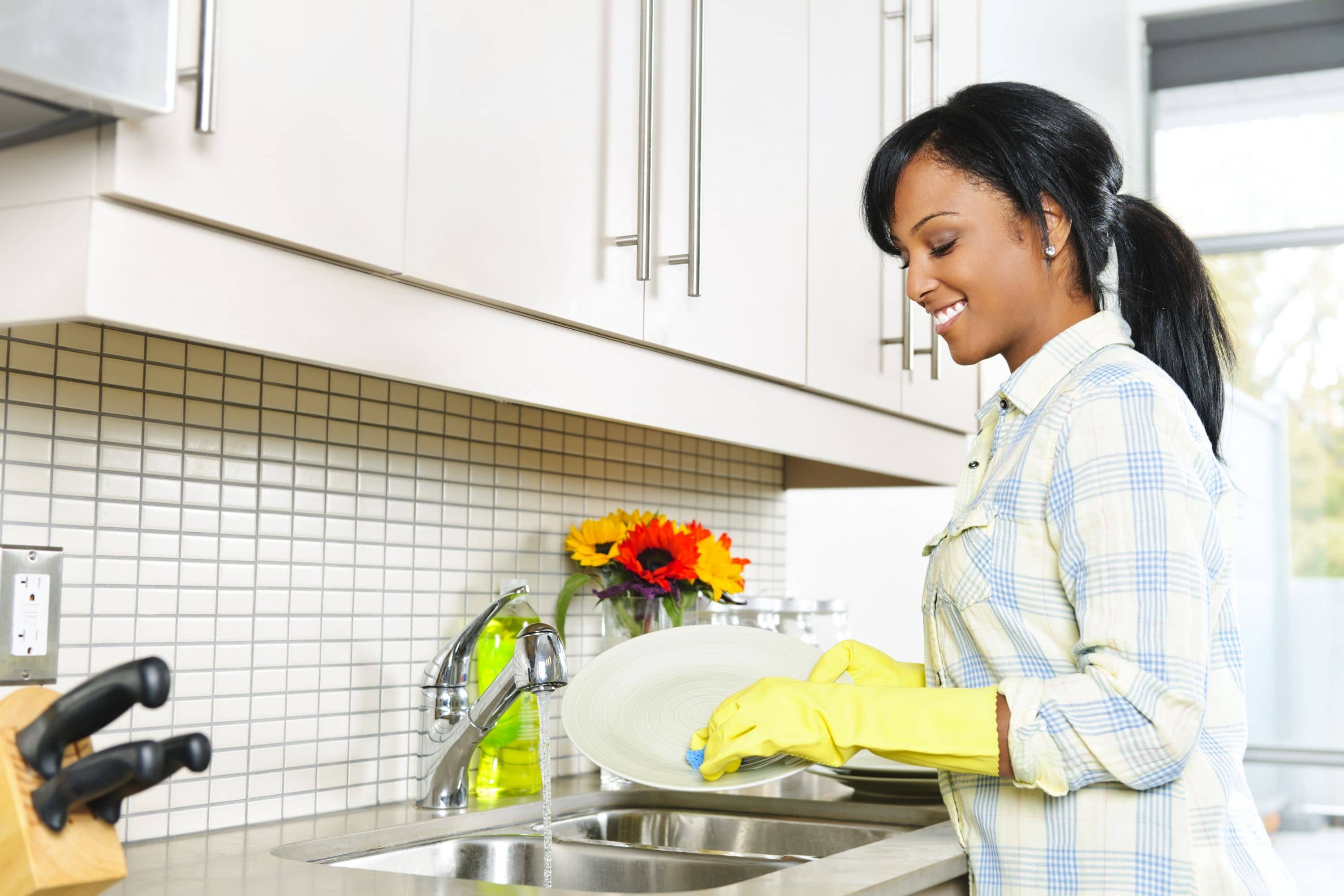
How Do I Sanitize Kitchen Surfaces By Hand?
Having your cooking utensils and dishes clean and sanitized is great, but your kitchen working surfaces must also be safe to use. Otherwise, your attempts to clean all the rest will be in vain since dirty surfaces, such as cutting boards or table tops, can contaminate the dishes with bacteria.
Luckily, there is a simple way of avoiding such a scenario! The easiest method is to make use of commercial sanitizing wipes or sanitizing products like sprays or liquids. If using these, you simply need to pulverize or apply the sanitizing product onto the surface and wipe it with a clean cloth or a paper towel.
However, if you prefer more eco-friendly solutions, you can prep your own homemade sanitizing product! To do this, simply blend one tablespoon of liquid chlorine bleach and one gallon of water. The scheme of application is the same as for the commercial sanitizers!
Like this, your tables, countertops, and other kitchen surfaces will be as safe as never before.
When following this order of cleaning and sanitizing your cooking utensils, you can be absolutely sure that your kitchen is the safest place on earth!

Factors That Influence the Sanitizing Process
It may seem that sanitizing is extremely simple. However, when doing it, you need to be aware of a few important nuances that most of us have no idea of! This information will help you to keep your cooking area clean and safe better.
- When you are using a chemical sanitizer, it is vital to use the right concentration. Otherwise, the sanitizing may not be that effective.
- Consider how hard your water is. See, hard water can affect the sanitizing agents making them not work that good as they should be.
- Make sure your cooking utensils spend the required amount of time in the sanitizing liquid. Otherwise, the effect will be less strong and sufficient.
- Also, temperature matters a lot! Water must be hot to kill the bacteria. It is especially true for heat sanitation!
When you know this information, it will be easier for you to make sure that all the steps you take to keep your kitchen sanitized and cleaned properly are not in vain.
Well, now we have shared a bunch of handy tips and useful information with you on how to keep your kitchen not just clean but also properly sanitized. Now you know what steps to take and in which order to be able to kill all the bacteria on your cooking surfaces and on the kitchen utensils and dishes.
And since you have also learned a couple of useful cleaning tricks, as well as a DIY recipe of a sanitizing product, you will be able to keep your kitchen even cleaner than a surgery room!
[wp-faq-schema title=”Frequently Asked Questions”]

